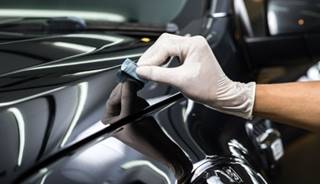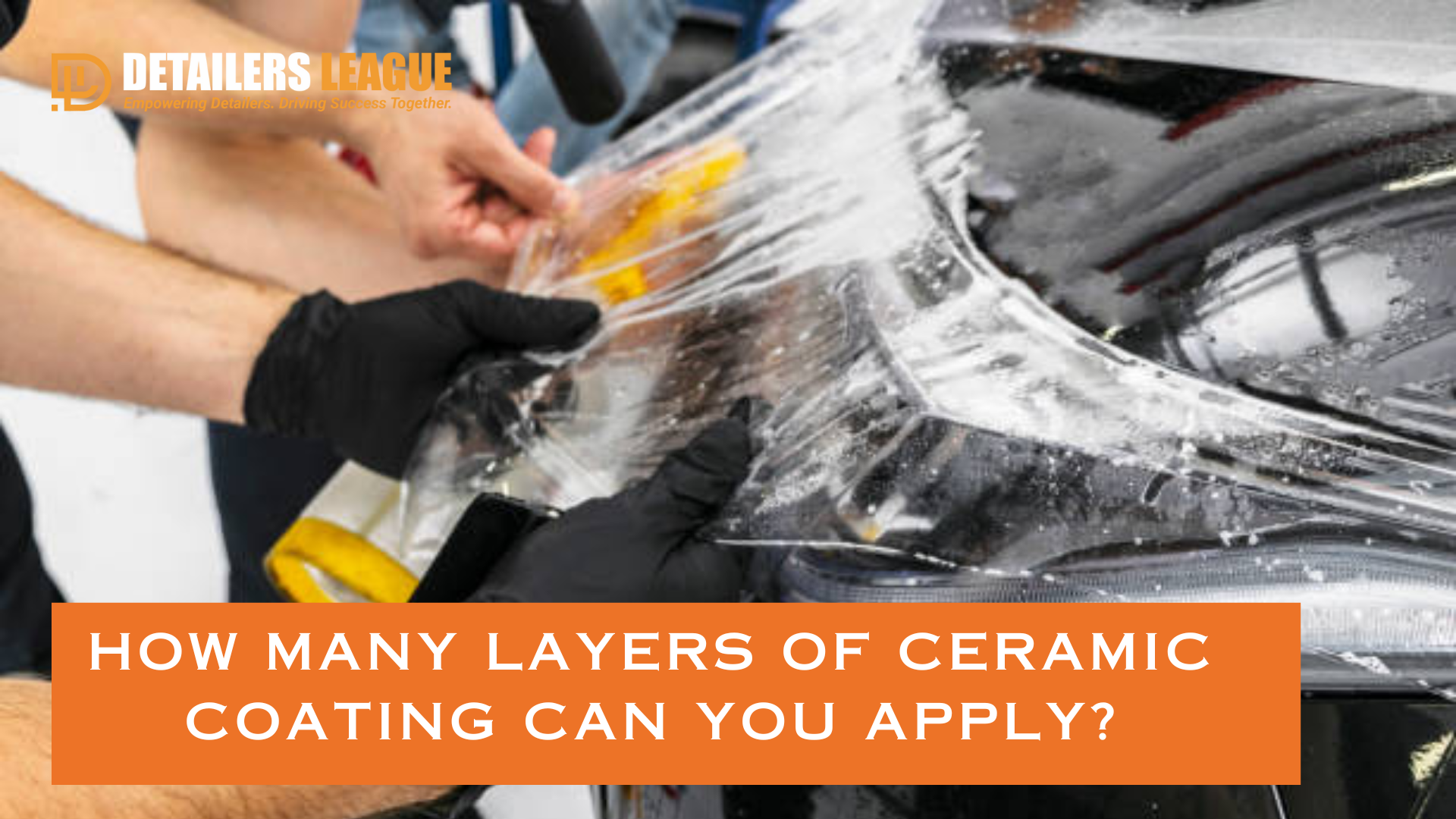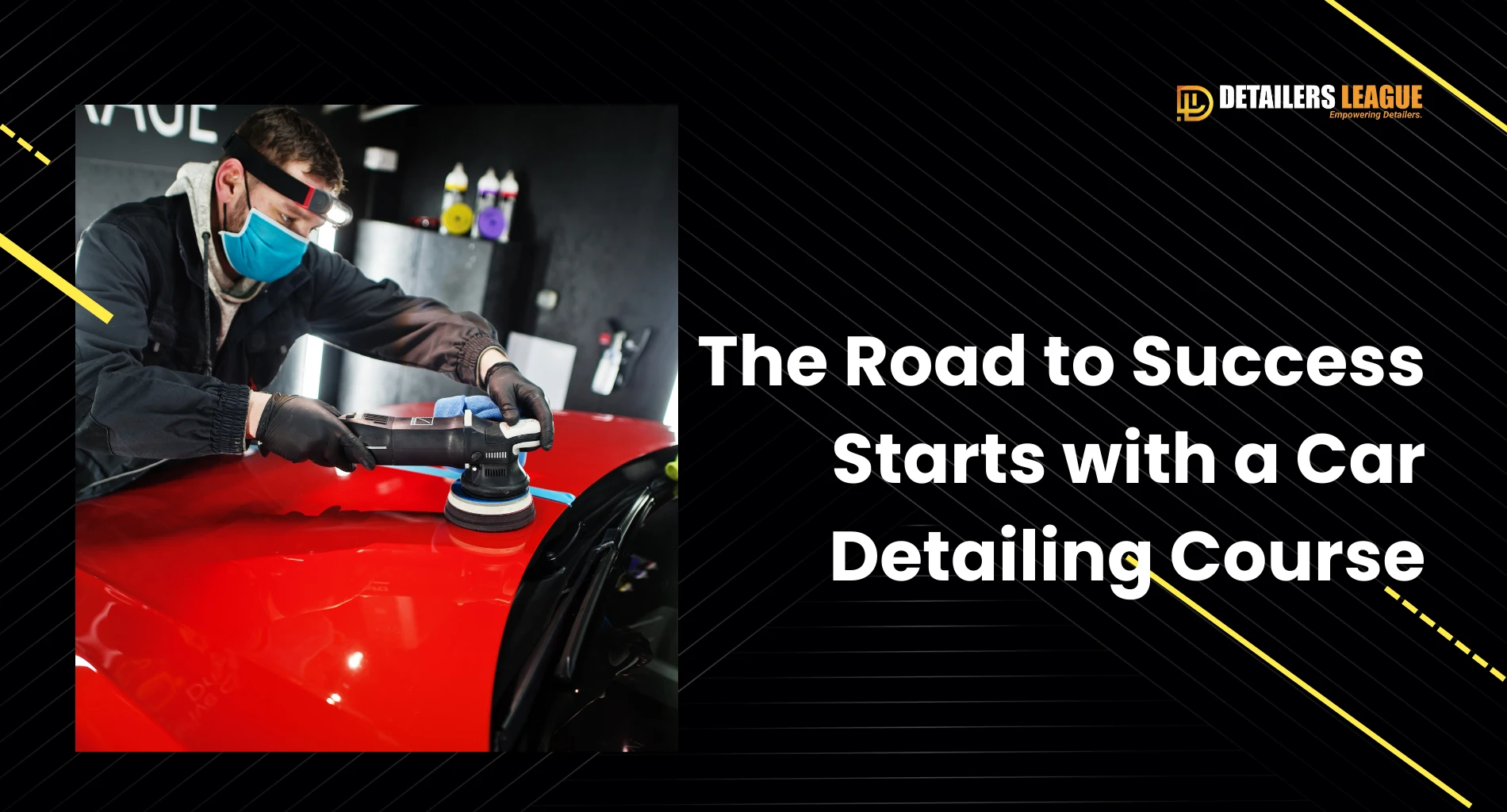Introduction
Ceramic coating has become a popular choice among car enthusiasts and professionals for protecting vehicle surfaces. But how many layers of ceramic coating can you actually apply? This question often pops up for those new to the world of ceramic coatings or those looking to enhance their vehicle’s protection. In this article, we’ll delve deep into the science, the benefits, and the practicalities of applying multiple layers of ceramic coating.
Understanding Ceramic Coating
Ceramic coating is a liquid polymer that bonds chemically with a vehicle’s factory paint, creating a protective layer. Unlike traditional waxes or sealants, ceramic coatings offer long-term protection and are resistant to environmental hazards like UV rays, chemicals, bird droppings, and more. There are different types of ceramic coatings available, ranging from consumer-grade products that can be applied at home to professional-grade coatings that require expert application.
The main function of ceramic coating is to provide a durable shield that keeps the vehicle’s paint looking new while making it easier to clean. The coating’s hydrophobic nature ensures that water, dirt, and grime slide off effortlessly.
Benefits of Applying Multiple Layers of Ceramic Coating
So, why would you want to apply multiple layers of ceramic coating? The answer lies in the enhanced benefits that come with additional layers:
- Enhanced Protection: Each layer adds an extra level of defense against contaminants and scratches, making your vehicle more resilient.
- Improved Aesthetic Appeal: Multiple layers can intensify the gloss and depth of the paint, giving your car that showroom finish.
- Increased Longevity: More layers mean longer-lasting protection, reducing the frequency of reapplication.
How Many Layers Can You Apply?
The number of layers you can apply depends on various factors. Generally, most professionals recommend applying two to three layers of ceramic coating. This provides optimal protection without risking the potential downsides of over-layering, such as difficulty in application or diminishing returns.
Industry Standards and Professional Opinions: Most manufacturers suggest two layers as sufficient for most vehicles. However, in high-demand environments, such as off-road vehicles or cars exposed to harsh conditions, up to four layers might be recommended.
Factors Influencing the Number of Layers: The condition of the vehicle’s paint, the quality of the ceramic coating product, and the environment in which the vehicle is used all play a role in determining the ideal number of layers.
The Science Behind Layering Ceramic Coating
Ceramic coating bonds with the vehicle’s surface through a chemical reaction that forms a hard, protective layer. The bonding process is crucial; each additional layer needs time to cure before applying the next one. Rushing this process can lead to uneven layers, reduced effectiveness, and even potential damage to the paint.
Curing Time: The time between applying layers is critical. Typically, a layer should cure for at least 24 hours before another is applied, though some high-end products might require a shorter or longer curing period.
Potential Risks of Over-Layering: Applying too many layers can lead to diminishing returns. The coating might become too thick, leading to cracking, peeling, or difficulty in removal if necessary.
Step-by-Step Guide to Applying Multiple Layers
If you’re considering applying multiple layers, here’s a basic guide to help you through the process:
- Surface Preparation: Start with a clean, dry surface. Use a clay bar to remove any contaminants, followed by a polishing compound to ensure the surface is smooth.
- Applying the First Layer: Apply the ceramic coating in small sections, using a crosshatch pattern to ensure even coverage. Wipe off any excess with a microfiber cloth.
- Curing Process: Allow the first layer to cure as per the product’s instructions before applying additional layers.
- Applying Additional Layers: Repeat the application process for each additional layer, ensuring proper curing time between layers.
When Less is More: The Case for Fewer Layers
While the idea of multiple layers sounds appealing, sometimes less is more. For most vehicles, one or two layers are sufficient. More layers may not significantly improve protection, especially for vehicles that are not exposed to extreme conditions.
Cost-Effectiveness: Fewer layers also mean lower costs. Since each layer requires time, product, and possibly professional assistance, sticking to one or two layers can be more budget-friendly without sacrificing protection.
Common Mistakes When Applying Multiple Layers
Applying ceramic coating isn’t foolproof. Here are some common mistakes to avoid:
- Inadequate Surface Preparation: Skipping the preparation steps can result in poor bonding and ineffective protection.
- Skipping the Curing Process: Not allowing enough time between layers can lead to poor adhesion and streaking.
- Applying Too Many Layers Too Quickly: This can result in an uneven finish and wasted product.
Professional Application vs. DIY: Number of Layers
When it comes to applying multiple layers, should you DIY or seek professional help?
Professional Application: Professionals have the experience, tools, and knowledge to apply multiple layers correctly, ensuring maximum protection and longevity.
DIY Tips: If you choose to apply ceramic coating yourself, ensure you follow the instructions carefully, take your time, and use high-quality products.
When to Seek Professional Help: If you’re unsure about the application process or if your vehicle requires extensive preparation, it’s best to consult a professional.
Maintenance of Multiple Layers of Ceramic Coating
Once you’ve applied multiple layers, proper maintenance is key to keeping your vehicle protected.
- Regular Washing: Use a pH-neutral shampoo to clean your car, avoiding harsh chemicals that can degrade the coating.
- Periodic Inspections: Check for any signs of wear or damage and address them promptly.
- Reapplying Layers: Over time, you might need to reapply layers, especially if you notice a reduction in the hydrophobic effect.
Myths About Ceramic Coating Layers
There are several misconceptions about ceramic coating layers that need to be addressed:
- “More Layers = Better Protection”: While additional layers do offer more protection, there’s a point of diminishing returns where more layers don’t necessarily mean better results.
- “Ceramic Coating is a One-Time Application”: Maintenance and occasional reapplication are necessary to maintain optimal protection.
- “You Can Apply Unlimited Layers”: In reality, there’s a limit to how many layers can be effectively applied before encountering issues.
Real-Life Examples and Case Studies
Looking at real-life examples can provide insight into the effectiveness of multiple layers. Many car enthusiasts report enhanced protection and aesthetic appeal with three to four layers of ceramic coating. However, others find that two layers suffice for their needs, particularly for vehicles used primarily in urban settings.
Cost Considerations
Ceramic coating isn’t cheap, especially when applying multiple layers. Here’s what to consider:
- Cost of Multiple Layers: Each additional layer requires more product and time, increasing the overall cost.
- Comparing Costs: Weigh the benefits of added protection against the cost of applying more layers.
- Budgeting: If cost is a concern, two layers often provide a good balance between protection and expense.
FAQs on Ceramic Coating Layers
- How Many Layers Should I Apply for Daily Use?
- Typically, two layers are sufficient for most vehicles used for daily driving.
- Can I Apply Ceramic Coating on My Own?
- Yes, but it requires attention to detail and proper preparation. Professional application is recommended for the best results.
- How Long Does Each Layer Take to Cure?
- Generally, each layer should cure for 24 hours, but always follow the specific product’s instructions.
- Is There a Limit to the Number of Layers?
- Yes, more than four layers may not provide additional benefits and could potentially cause issues.
- What Happens if I Apply Too Many Layers?
- Over-layering can lead to problems like uneven application, cracking, or peeling of the coating.
Conclusion
In conclusion, the number of ceramic coating layers you apply depends on your vehicle’s needs, your budget, and your desired level of protection. While multiple layers can offer enhanced benefits, it’s important to strike the right balance to avoid unnecessary costs and potential application issues. Whether you choose to apply one layer or several, ensuring proper application and maintenance is key to enjoying the long-lasting benefits of ceramic coating.

















